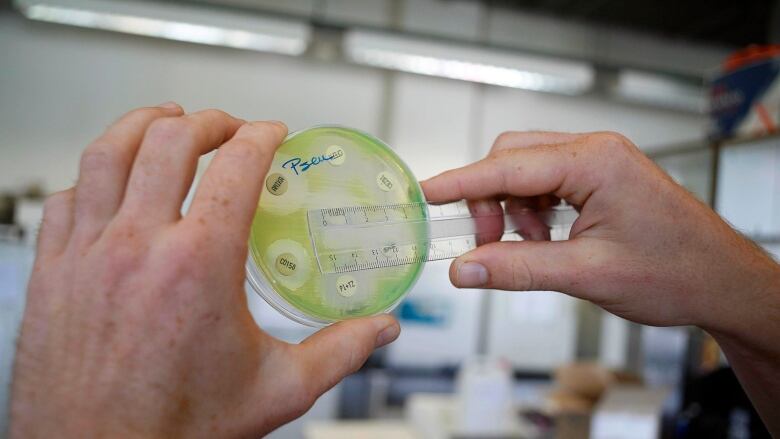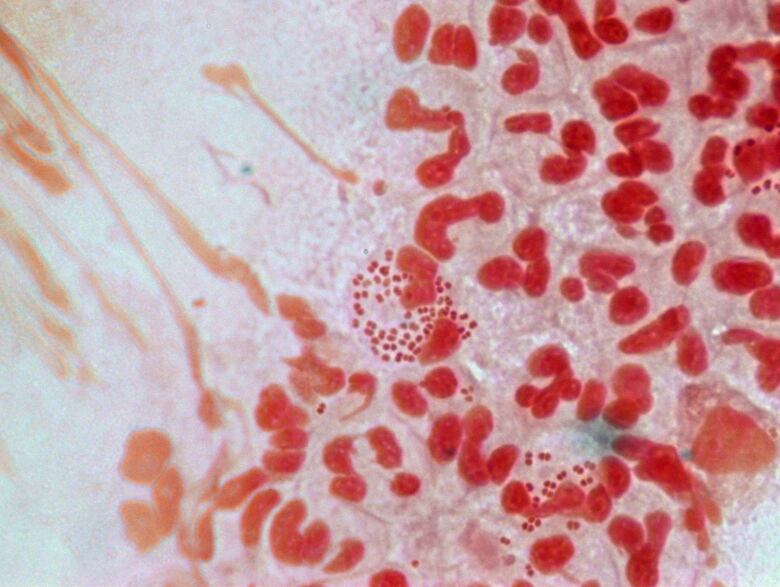Canadian researchers find new compound to potentially fight antibiotic-resistant infections
Antibiotic PEG-2S targets an infection's energy source, ignores healthy gut bacteria

Two scientists at St. Boniface Hospital in Winnipeg have discovered a compound that they hope will eventually help in the fight against antibiotic-resistant infections.
Dr. Grant Pierce and Dr. Pavel Dibrov's research, which was published in the Canadian Journal of Physiology and Pharmacology Thursday, saystheir newly-developed compound, PEG-2S, works by cuttingoff theenergy source of bacteria a protein vital to their survival.
"It's important because this protein is not found in the normal cells of your body lung, heart, wherever," said an excited Pierce. "It's worked beautifully."
While the new compound is lethal to bad bacteria it has the added benefit of bypassing healthy cells, according to tests done in Petri dishes. It has not undergone animal and human trials necessary for approval as a drug.
"It does not have an effect on the normal cells in your body and it doesn't have an effect on the good bacteria that's in your gut,"said Pierce.
The compound's target is not a traditional one forantibiotics.
Most antibiotics today attack one of three targets the cell wall, protein synthesis or DNA replication within the bacteria, said Pierce.
"Ours is quite different," he said.

Preliminary research shows the effectiveness in Petri dish testsof PEG-2Sfor treating Chlamydia trachomatis the sexually-transmitted disease known simply as chlamydia but the scientists have also tested it successfully on pneumonia, Legionnaires' disease, gingivitis and periodontitis, said Pierce.
Researchers say the compound, if successfully tested and approved,could potentiallytreatcholera, wound infections, septicemia, and gonorrhea infections that all use the samesodium transport mechanism or energy source.
Approval could take 10 years
A host of infections that were once easily annihilated by common antibiotics have become resistant to treatment in recent years.
Hundreds of thousands of people die each year around the world from antibiotic-resistant bacterial infections and it's been 30 years since the last new class of antibiotics was discovered.
It's possible that in the not-too-distant future, a skinned knee that becomes infected could be life-threatening, said Pierce.
"Identifying a new target for the antibiotics is extremely important," Pierce said.
PEG-2Sis not only a potential weapon against drug-resistant bacteria it may also take longerfor bacteria to build a resistance to it because the drug acts so differently from other antibiotics.
He and Pavelare currently seeking patent approval from the U.S. Food and Drug Administration forPEG-2S.
It could take five to 10 years, Pierce estimated, beforethe compound makes it on topharmacy shelves. However, many drug candidates fail because of toxicity, reduced impact in humans, lack of interest from the pharmaceutical industry or other factors.












_(720p).jpg)


 OFFICIAL HD MUSIC VIDEO.jpg)
.jpg)



























































































